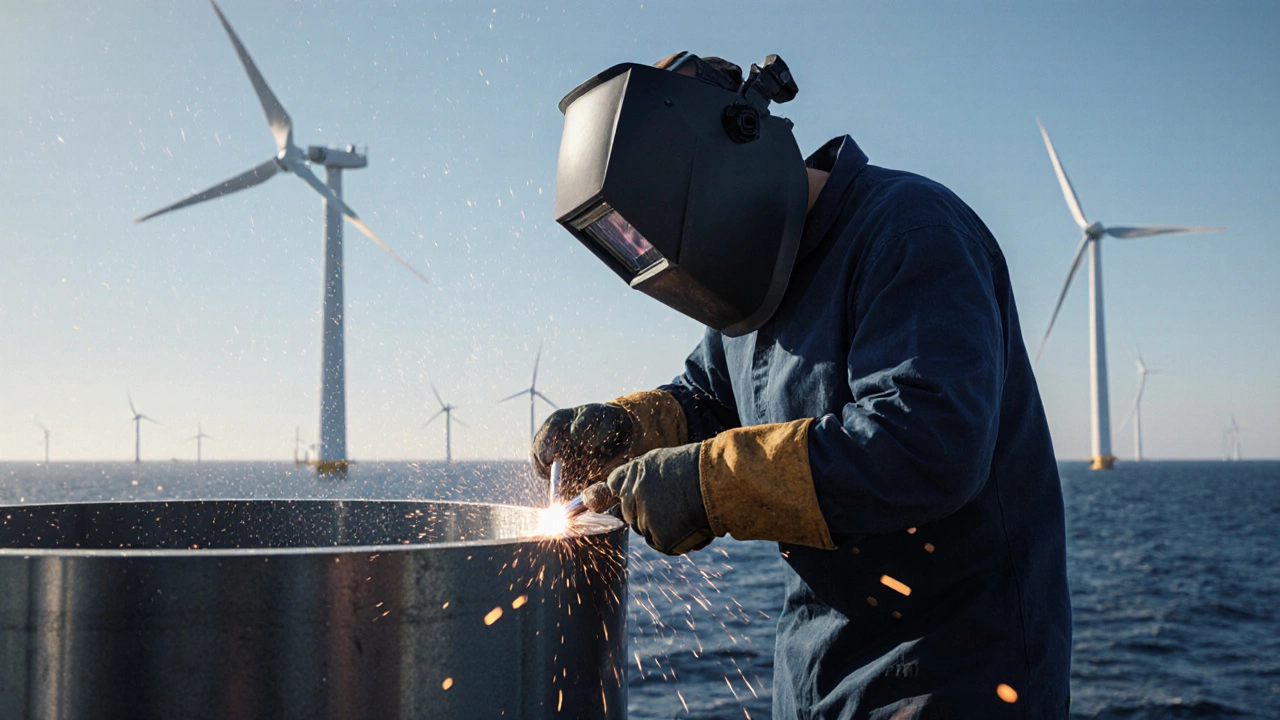Welding Jobs 2025: Demand, Pay, and How to Stay Competitive
When you think about welding jobs 2025, skilled trades that power infrastructure, manufacturing, and energy projects across the UK. Also known as fabrication work, it's one of the few hands-on careers where demand keeps rising even as automation grows. This isn’t just about holding a torch and melting metal—it’s about reading blueprints, understanding materials, and working safely in tight spaces or high-heat environments. And in 2025, companies are struggling to find enough qualified welders to fill the gaps.
Welding isn’t going away—it’s changing. welding apprenticeship, structured on-the-job training paired with classroom learning, often funded by the government or employers. Also known as trade apprenticeships, it’s the most common path into the field for people without degrees. You don’t need a university degree to start. Many employers pay you while you learn, and by the time you finish, you’ve already got real project experience. The best apprenticeships lead to certifications like City & Guilds or NVQ Level 2 and 3, which employers trust. These aren’t just paper qualifications—they prove you can handle structural steel, pipelines, or ship hulls under real conditions.
And pay? It’s better than most people think. Entry-level welders in the UK often start around £22,000 to £28,000 a year. But if you specialize—say, in underwater welding, pipeline work, or aerospace—it’s not rare to hit £45,000 or more. Some highly skilled welders in offshore oil or nuclear sectors earn over £60,000. The key isn’t just working hard—it’s working smart. Learn multiple techniques: MIG, TIG, stick, and flux-core. Know how to read engineering drawings. Understand safety standards like BS EN ISO 9606. These aren’t optional extras—they’re what separate someone who just welds from someone who gets hired first.
Automation is changing parts of the job, but it’s not replacing welders—it’s changing the role. Robots do repetitive seams, but humans still handle complex joints, repairs, inspections, and quality control. The welders who thrive in 2025 aren’t the ones afraid of tech—they’re the ones who learn to work alongside it. Many training programs now include basic robotics awareness, digital welding logs, and laser alignment tools. If you’re open to learning new tools, you’re not just keeping up—you’re getting ahead.
Welding jobs are scattered across the UK, but some areas have bigger needs. Scotland’s offshore energy sector, the Midlands’ manufacturing hubs, and the North’s shipbuilding and rail projects are all hiring. Even smaller towns with local fabrication shops need skilled welders. You don’t have to move to London to find work. And with the right certification, you can take your skills anywhere—even overseas.
There’s no magic shortcut. But if you’re willing to show up, learn the basics, and keep improving, welding in 2025 offers stability, decent pay, and real pride in what you build. Below, you’ll find real guides on how to get started, what certifications matter most, how automation is reshaping the trade, and how to avoid common mistakes that turn people away from the field.




